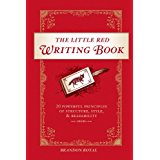Cover the Blog Genre Gamut
“Don’t be afraid to write in tried-and-true blog genres,” Gary DeAsi and Evan Stone advised their fellow financial planners as part of the FPA Practice Management Solutions Magazine almost three years ago, listing eight kinds of blogs they called “proven attention getters’”:
- Advice
- Collections and top lists
- Reviews
- Predictions
- Motivation
- Trouble-shooting
- Interviews
- Editorial/ Personal reflection
- Now, five years later, I’m inviting each of you Say It For You blog readers to come up with titles you’ve written or found that fit into each of these categories. If you submit your favorite titles, I’ll publish them here, along with some tips on flesh out those ideas to suit your own business. More important, ask yourself whether you’re lending variety to your blog by including all these genres.
Meanwhile, over those same five years I’ve come up with at least four blog genres I believe ought to be added to the list to round out the “blogger’s dozen”…:
9. The tidbit blog uses a piece of trivia to spark interest and help readers understand a concept or product.
10. The comparison blog uses a metaphor to explain a complex idea in terms of a tangible object.
11. The “confession” blog tears away the “stage curtain” between the business owner and the reader, humanizing business or practitioner and hopefully generating feelings of empathy and admiration.
12. The “brag blog” shares accomplishments of which the business owner or practitioner had every right to be proud – a product breakthrough, an award, a milestone reached, an unexpected success.
DeAsi and Stone were telling financial planners not to be afraid to write in tried-and-true genres. As a business blogging trainer, I’d go a few steps further, advising content writers to keep it fresh, saying “Don’t be afraid to keep creating new blog genres!”



 “Why can’t we innovate as quickly as our competition?’ asks the pointy-haired boss in the comic strip “Dilbert®”. “Maybe it’s because our management is like a family of squirrels that lives inside an old tire,” suggests Dilbert. Asked to be more specific, Dilbert says “It’s a Goodyear tire with five grey squirrels.”
“Why can’t we innovate as quickly as our competition?’ asks the pointy-haired boss in the comic strip “Dilbert®”. “Maybe it’s because our management is like a family of squirrels that lives inside an old tire,” suggests Dilbert. Asked to be more specific, Dilbert says “It’s a Goodyear tire with five grey squirrels.”

Follow us online!